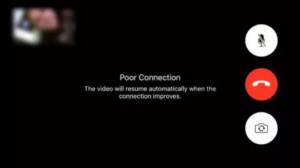In these times of University closures and social distancing, many of us have transformed overnight from lab and office workers into home workers and telecommuters. With most of us now relying on videoconferencing apps like Zoom, and Microsoft Teams to keep in touch with colleagues (as well as older relatives, and for Saturday night parties and dates – but that’s probably for a different blog).

No surprise, that with our homes and workplaces merging into one, the boundaries between our personal and professional lives are beginning to blur — and awkward situations ensue (note-to-self, remember to mute before you flush).
Three weeks into ‘lockdown’ and I am sure a few of you have had video calls with colleagues who joined meetings in odd places, like the shed at the end of the garden, or bathroom, to avoid their children. Then there are the colleagues who relax completely and let their children and pets be a part of the meeting, and have taken to wearing onesies (you know who you are).
It’s cute and touching. But it can also be really annoying and make a meeting last twice as long as it needs to, or just trash the whole thing – not to mention making some colleagues feel uncomfortable.
No one wants to be a stick in the mud, particularly when everyone is just trying their best, under incredibly difficult circumstances. But… if we learned anything from Robert Kelly and his children in that famous BBC interview, it is that we can be prepared.
So, here are a few tips to help you, to help your colleagues – a little preparation goes a long way to making video calls more tolerable.
You need an Agenda
Just like physical meetings, someone really needs to chair. You need someone to make your virtual meeting engaging and succinct, it is easy to get side-tracked.
But do you need minutes? Well one benefit of this format is the potential to simply hit record and then email the link to everyone who couldn’t attend. Personally, I think a combination of the two works best. Take a note of the key actions, and then email everyone afterwards with a link to the recording (should they want to watch back) and a note of the key actions.
I asked my twitter friends for their own top tips, and I particularly like one from Sarah Gregory [1] “If it’s a bigger meeting or you have people new to video-conferencing I think it can be good to find a way to get everyone to speak at least once in the meeting, even if it’s just their introduction or having people lead different sections of the meeting”.
When you are setting the agenda, think about asking each of the attendees to lead a section, and think hard about why people are attending, if they don’t have to contribute, do they really need to be there? They could just be sent the recording to watch and their leisure. Katie Roberts [2] suggests that a good chair should “ask quieter members of the team if they have anything to add, if you think it would help them. I find that video chats can benefit those with louder voices even more than in real life, but also think that video is better than just voice chatting for this.” Nicky Taylor [3] makes a good point “Ask people to ‘name’ themselves appropriately when signing in. e.g. if it’s first name only – helps with privacy – or full name so host knows who they are letting in e.g. on Zoom. Also Consider the benefits of using gesture in video calls to confirm agreement / disagreement or to signal a desire to speak. ‘Dementia Voices’ use ‘I want to speak’ cards or participants hold up something bright. This means turn taking is adhered to without lots of disruptive noise”.
 Check the tech
Check the tech
The main problem of a terrible videoconference is the quality of the connection. If you can’t see or hear people, what’s the point?
Before you start run a quick test:
1. Preview your webcam.Mac users can launch the Photo Booth app, and Windows users can click the Start button, then Camera. Most apps such as zoom, skype, teams and hangouts allow you to start an empty meeting. This allows you to check your picture. Adjust your lighting and camera angle to make your face look properly lit.
This might not be tech related but importantly… be mindful of your backdrop, anything you wouldn’t want your colleagues to normally see should be moved, like your signed copy of 50 shades of grey on the bookshelf (yes, I am one of those people who will judge you) or dirty laundry. Tim Skellett [4] agrees with me “Check your background FIRST” although he won’t judge you quite so harshly as I do based on your choice of literature or artwork (Although twitter is, see the thread under #BookcaseCredibility [5]).
If you really can’t be bothered to tidy up, some apps do allow you to blur your background, or even use a virtual background – but please, choose something professional, not the command centre of the Starship Enterprise.
Nicky Taylor [3] suggests “Ideally don’t have camera facing doors where others enter! Ask people to disable video if they have to move away for any reason. I’ve been on trips round people’s houses and gardens! It can be distracting for remaining participants and can compromise the individual’s privacy.”
Anthony Martyr [6] agrees “If using zoom learn how to change the background in the settings. This is a tip rather than directed at anyone here” (Sounds like he has seen something he can’t unsee)
2. Test the mic. If you are using a headset with a built-in microphone or use an external microphone, you may need to tell the app you are using to use the mic from your devise — the microphone included on laptops will probably be the default. You may not realise that the laptop mic is being used, until everyone complains they can’t hear you. Try having a video call with a friend to test the sound, then adjust accordingly.
On this subject… think about background noise, but I will come to that later.
3. Internet speeds.Bandwidth and services are slowing down in many areas. Visit net [7] to check your internet speeds. If you’re coming up at less than 15-20 megabits per second, there is a good chance your video is going to look pixelated and there may be a delay on your audio. There are lots of articles out there to suggest ways to improve this. But here are a few suggestions:
If you really have to, you can turn-off video, but this should really be a last resort. Before you get to that stage, run around the house, and turn-off or disconnect the wifi on other devices that might be sapping your bandwidth e.g. tablet, smart-phone, skybox, the kid in the next room streaming Netflix and playing Fortnight (turning off their devices, not the children).
You need boundaries
We know that families are more important than ever right now, keeping your loved once close is important. However…. that doesn’t mean your colleagues want to your boyfriend in his pants, dogs on laps or children screaming and bouncing on your head. With children at home, this can be difficult. But that is why, where possible, it’s important to take a video call in a place where you can draw boundaries and be alone. The easiest way is to close the door.

If you lack a home office and work from the dining table, and there really is no escaping the distraction, just mute yourself, and turn off the camera until you need to contribute – and find yourself a good set of headphones, or move to the bedroom (okay, I am not suggesting you leave your two year old to fend for themselves for two hours, so in those instances use mute).
This brings me back to my earlier point, if you really don’t think you can join without causing a distraction, then see if you can just watch back later, try and schedule for when you will be less distracted. Kids and pets may want to say hello, and that is fine, during the first few minutes, but after that… so think about making muted your default.
Danielle Eadie [8] says “Put the dog outside or in another room if you’re working from home as they definitely always want to join in at the wrong moment”
Concentrate
If you have something better to do than be on a video call e.g. answering emails etc. it would be more polite to excuse yourself than to remain on the call and obviously not paying attention, kicking out keyboard tapping noises. Back to the point, that do you really need to be there?
Paying attention to what is going on, is important for another reason too – unwelcome visitors Nicky Taylor [3] provides a good reminder “As the host you are responsible for security so take this very seriously, be informed and ready to act quickly if uninvited guests appear. Keep learning and understanding the limitations of security settings and remind participants of their role in keeping meetings secure.”
When the tech lets you down, move On
If you weren’t working from home, would you be video calling? The old-fashioned telephone is just as good – give it a few minutes, and then quickly give up, and use a conference call instead.
Final thoughts
It could be a long time before we get back to normal, and who knows… maybe this change of working will inspire more of this in future, when distant working is an option rather than a requirement (my dog hopes this is the case).
I would love to hear your stories of video calls gone bad, or tips further tips on how to make these calls work – tweet using the #ECRDementia [9]
Author
Adam Smith [10]was born in the north, a long time ago. He wanted to write books, but ended up working in the NHS, and at the Department of Health. He is now a Programme Director in the Office of the NIHR National Director for Dementia Research (which probably sounds more important than it is) at University College London. He has led a number of initiatives to improve dementia research (which happens to include creating this website, Join Dementia Research and ENRICH), as well as pursuing his own research interests. In his spare time, he grows vegetables, builds Lego and spends most of his time drinking too much coffee and squeezing technology into his house.
You can follow Adam on Twitter Follow @betterresearch [11]